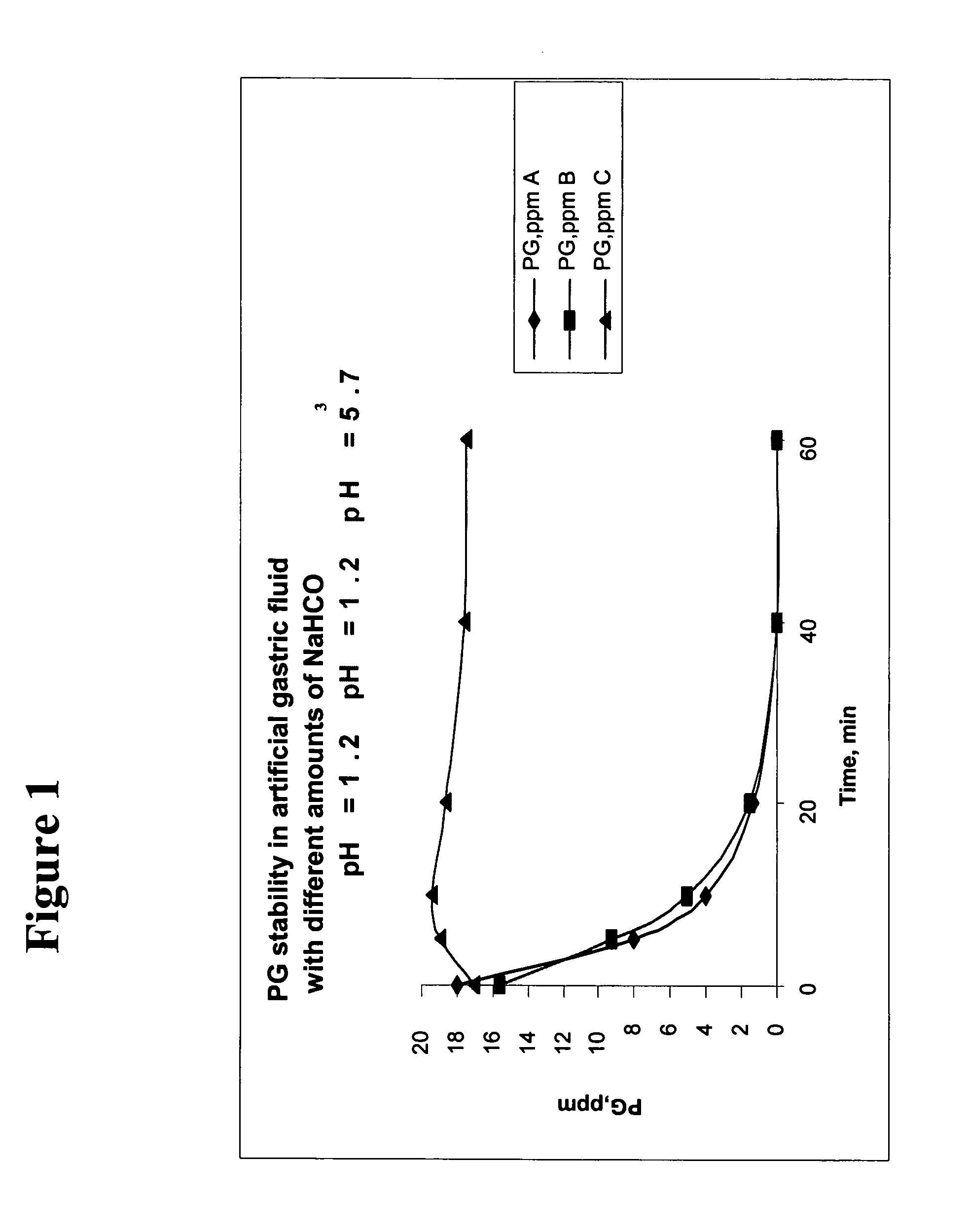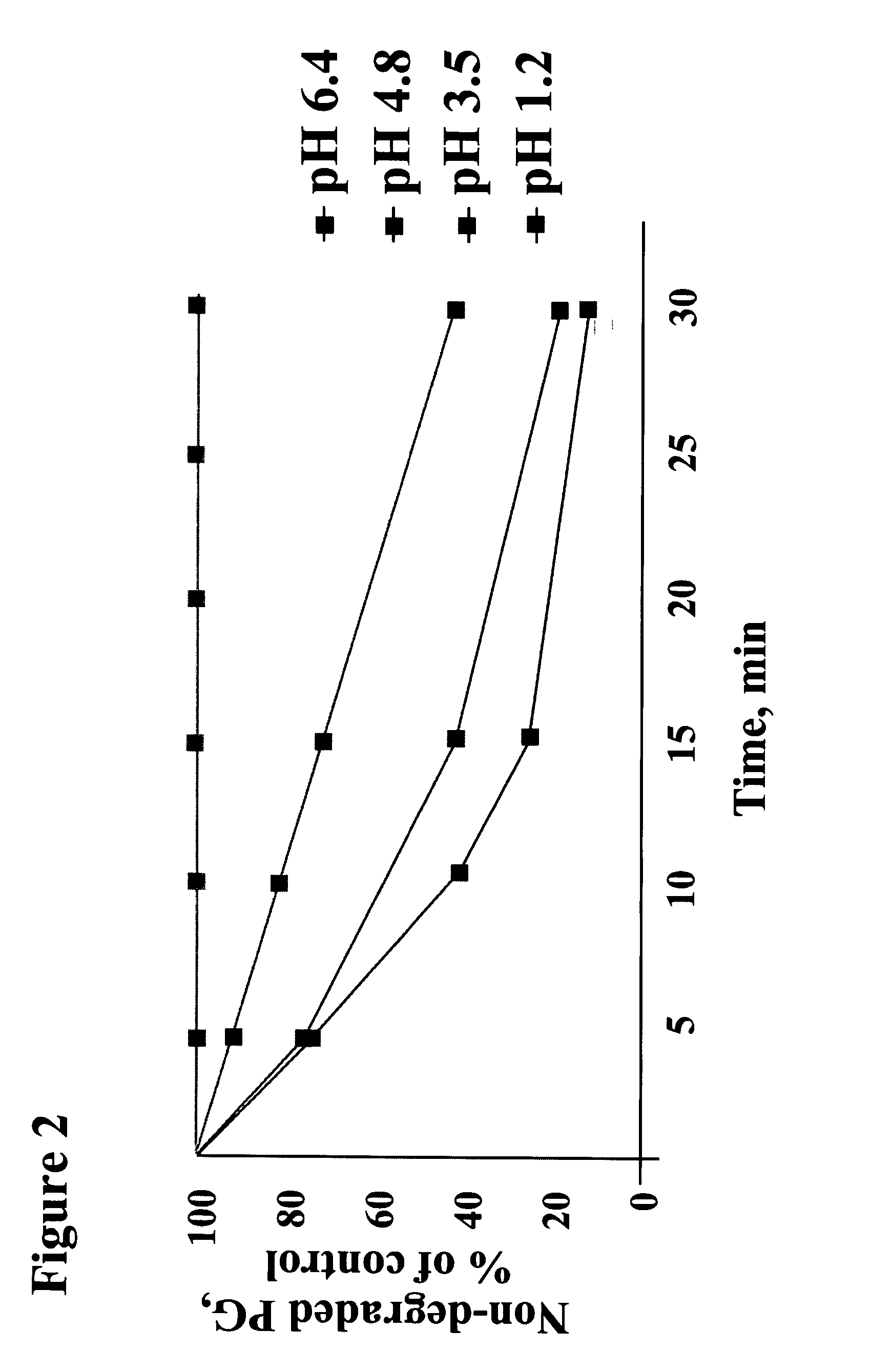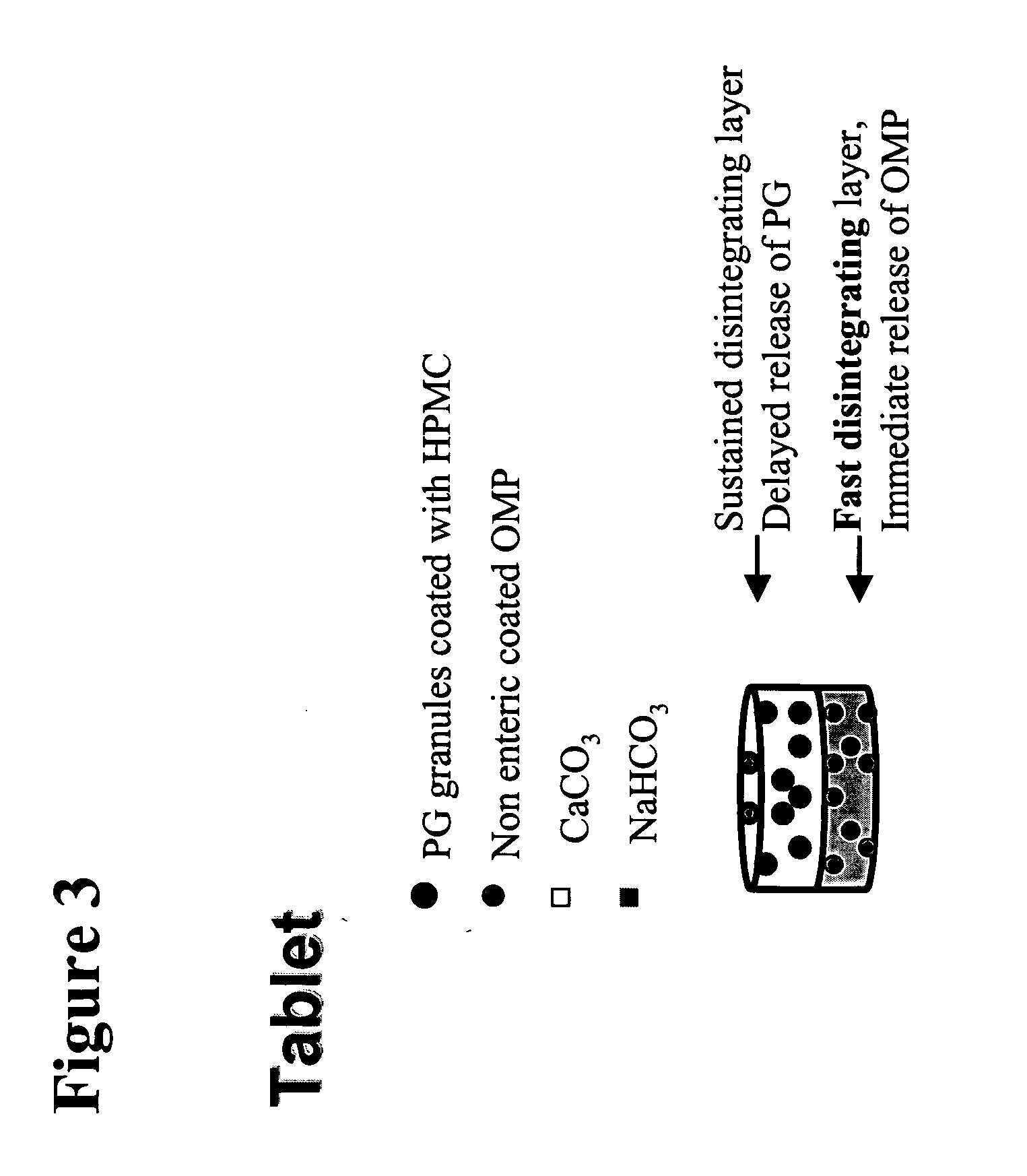Compositions and methods for treating pathologies that necessitate suppression of gastric acid secretion
a gastric acid secretion and composition technology, applied in the field of oral compositions for inhibiting gastric acid secretion, can solve the problems of limiting the usefulness of on-demand gerd, ppis has notable limitations, and ppis have a relatively slow pharmacological action, and achieves the effect of prolonging the inhibition effect of gastric acid secretion and fast ons
- Summary
- Abstract
- Description
- Claims
- Application Information
AI Technical Summary
Benefits of technology
Problems solved by technology
Method used
Image
Examples
example 1
NaHCO3 Preserves PG Stability in Artificial Gastric Fluid
[0111] The stability of PG in acidic pH in the presence of NaHCO3 was tested in vitro using artificial gastric fluid. Artificial gastric fluid was prepared in accordance with U.S. Pharmacopoeia (USP) 2000 Ed., P. 235. For preparing 200 ml of gastric fluid, 0.4 g of NaCl and 0.64 g of Pepsin were dissolved in 16 ml 1M HCl and 184 ml of water. The pH of the gastric fluid was 1.2. Ten or twenty ml of 8.4% (1M) NaHCO3 (final concentration 3.72 mg / ml or 7.12 mg / ml, respectively) and 16 ml of 250 ppm PG solution (0.25 mg / ml) were added to the solution. The concentration of PG in the final solution was 16 ppm. When indicated, Omeprazole granules were added as well (solutions B and C). In order to determine the stability of PG in the final solution over time, HPLC analysis was performed on samples taken at the following time points post preparation: 0′ (immediately following preparation), 5′, 10′, 20′, 40′, 60′. To stop the reaction,...
example 2
Press-Coated or Double-Layered Tablets Comprising PG, Non-Enteric-Coated Omeprazole, Sodium Bicarbonate and Calcium Carbonate
[0114] Press-coated or double-layered tablets are formulated as a single dosage form in which each tablet containing the following ingredients:
Omeprazole (powder) 40 mgPG 4 mgNaHCO3500 mgCaCO3500 mgCroscarmellose sodiumhydroxypropyl methylcellulose (HPMC)Microcrystalline cellulose (Avicel)Magnesium stearateStarch
[0115] Press-coated or double-layered tablets are prepared in a two-step process. For a single tablet, 4 mg PG, 250 mg calcium carbonate and microcrystalline cellulose are mixed and pre-compressed into the first layer of the tablet. The layer containing the PG is further coated with a thin layer of HPMC that permits a delay of 10-15 min in the release of PG from the tablet. For the second layer, 40 mg of non-enteric-coated omeprazole powder together with 500 mg NaHCO3, 250 mg CaCO3 and the appropriate binders are compressed onto the PG layer to form...
example 3
Fast Disintegrating Tablets Comprising PG, Non-Enteric-Coated Omeprazole, Sodium Bicarbonate and Calcium Carbonate
[0116] Fast disintegrating tablets are formulated as a single dosage containing the following ingredients:
Omeprazole (powder) 40 mgPG 4 mgNaHCO3500 mgCaCO3500 mgCroscarmellose sodiumMicrocrystalline celluloseMagnesium stearateStarch
[0117] Non-enteric-coated omeprazole (40 mg), PG (4 mg), NaHCO3, CaCO3, Croscarmellose sodium, Microcrystalline cellulose and Magnesium stearate are mixed and the resulting mixture is compressed into tablets using standard tablet pressing to yield a fast disintegrating tablet (intravescent).
PUM
| Property | Measurement | Unit |
|---|---|---|
| Mass | aaaaa | aaaaa |
| Mass | aaaaa | aaaaa |
| Mass | aaaaa | aaaaa |
Abstract
Description
Claims
Application Information
 Login to View More
Login to View More - R&D
- Intellectual Property
- Life Sciences
- Materials
- Tech Scout
- Unparalleled Data Quality
- Higher Quality Content
- 60% Fewer Hallucinations
Browse by: Latest US Patents, China's latest patents, Technical Efficacy Thesaurus, Application Domain, Technology Topic, Popular Technical Reports.
© 2025 PatSnap. All rights reserved.Legal|Privacy policy|Modern Slavery Act Transparency Statement|Sitemap|About US| Contact US: help@patsnap.com



